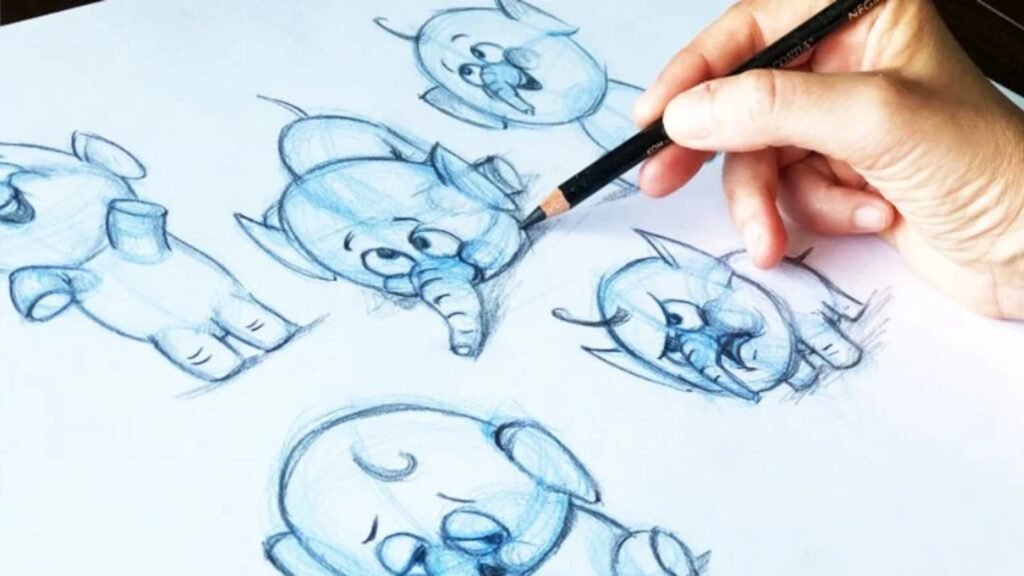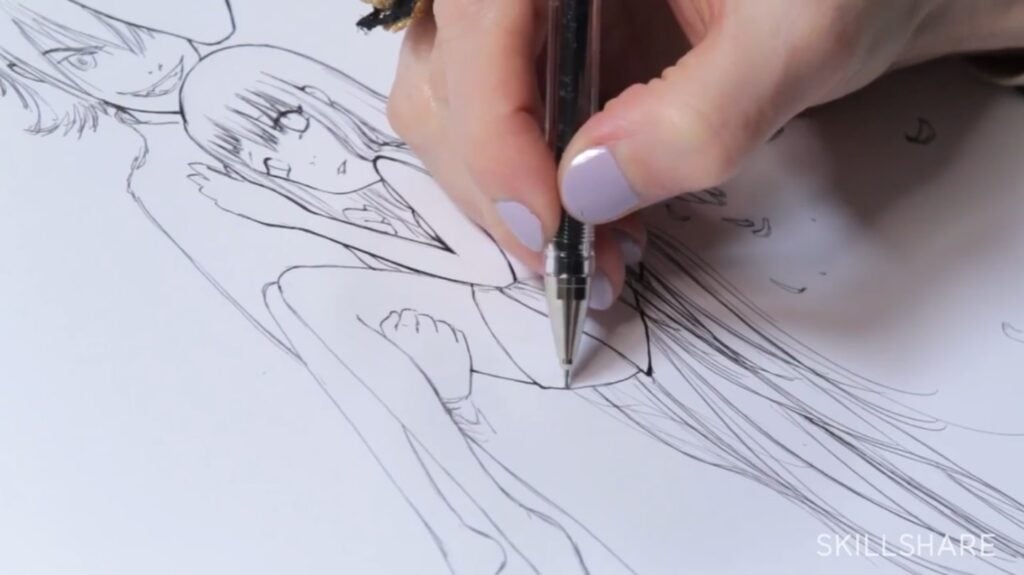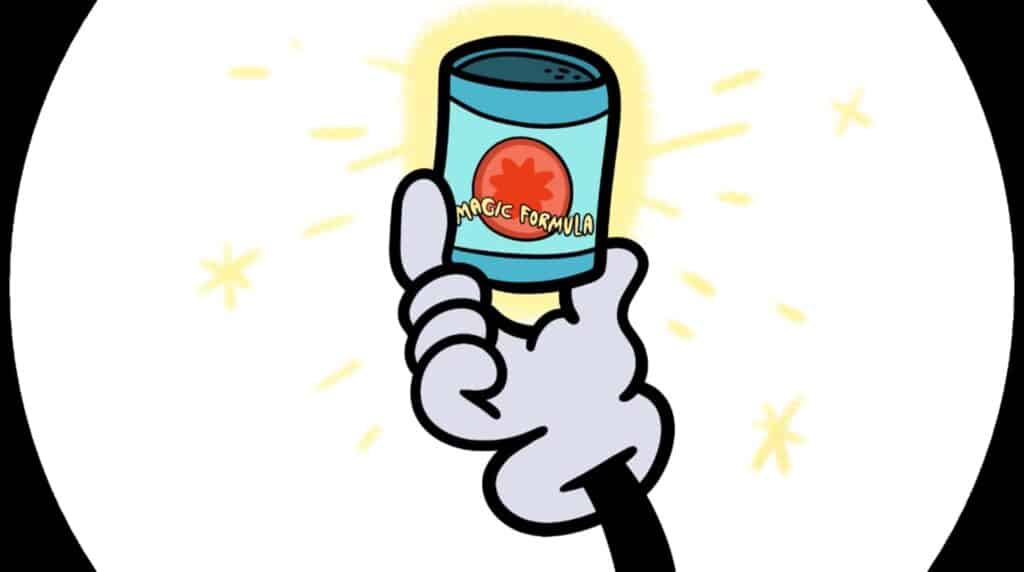Updated: Apr, 9 2024
11 Cartoon Art Styles To Know
From rubber hose animation to South Park, get inspired by learning about 11 distinct cartoon art styles that have shaped animated and printed cartoons.
Cartoon art has evolved over the course of many years, and now encompasses a diverse range of styles that captivate audiences around the world. From the classic to the contemporary, each cartoon style has its own unique charm and appeal.
Become a better cartoonist (or just deepen your artistic knowledge) by learning about 11 distinct cartoon art styles that have left an indelible mark on the worlds of illustration, media and entertainment.
A Brief History of Cartoon Art

Cartoon art has a rich and vibrant history that dates back centuries. The term itself is derived from the Italian “cartone,” which in the Middle Ages referred to a large card or sheet of paper used to draw designs for paintings, tapestries and other works of art.
As time progressed, the meaning of “cartoon” expanded to include humorous and satirical illustrations. For instance, the 19th century saw the rise of comic strips in newspapers, which provided artists with a platform to showcase their storytelling skills through sequential art.
The 20th century witnessed the golden age of animation, with iconic characters like Mickey Mouse, Donald Duck and Bugs Bunny becoming cultural phenomena. The widespread use of television brought animated series from movie theaters into living rooms, which created a new and increasingly popular avenue for artistic expression. Today, cartoons continue to thrive in various forms, from traditional hand-drawn cel animation (as seen in the video game Cuphead) to prime-time cartoons (think Adventure Time) that push the boundaries of line drawing.
11 Cartoon Art Styles To Know About

Cartoon art has evolved into a vast tapestry of styles, each with its own distinct characteristics.
From the hand-drawn charm of classic cartoons to the splashy effects of modern animation, there’s a cartoon style for every taste. These are 11 cartoon art styles that have shaped the landscape of visual storytelling.
1. Rubber Hose
Traditional early 20th-century cartoons almost all exemplified “rubber hose” animation, a style characterized by arms and legs that resembled curved rubber hoses rather than jointed limbs. Think of classic characters like Felix the Cat and Steamboat Willie, which catalyzed the explosion of American animation and paved the way for the cartoon wonders that followed.
2. Modern
In general, modern cartoon art embraces cutting-edge technology and innovative techniques. With vibrant colors, smooth animations and intricate designs, this style pushes the boundaries of what is visually possible, and often involves digital animation techniques in addition to (or instead of) hand drawing. Prime examples include Spongebob Squarepants, Steven Universe and Rick and Morty.
3. Chibi
Chibi, a Japanese term that literally means “short,” refers to a super-deformed style where characters are drawn with exaggerated features, most notably a small body and a large head. This style often conveys a cute and playful aesthetic, and can be seen in series like Teen Titans Go!, as well as countless Japanese examples.
4. Anime
Originating in Japan, anime is a distinct style known for its colorful artwork, fantastical themes, vibrant characters and — perhaps most of all — large, expressive eyes. Anime has become a global phenomenon, with a massive fan base eagerly consuming a wide array of genres. Popular anime series include Sword Art Online, Death Note and Pokémon.
5. Realistic
The realistic cartoon art style combines the artistic elements of traditional cartoons with a commitment to portraying characters and settings in a more lifelike manner. This style is often used in animation to create immersive and visually stunning worlds — think Disney’s The Lion King.
6. Manga
Similar to anime but with a focus on printed or published works, manga is a Japanese comic book or graphic novel style. Manga artists use intricate linework and detailed expressions to convey a wide range of emotions, as seen in mangas like Bleach and Fullmetal Alchemist.
7. Unique
This cartoon art style defies categorization, and involves cartoonists drawing inspiration from various sources to create something entirely new. It allows for creative freedom and often results in visually striking and unconventional characters. One example is the series The Wild Thornberrys, which featured highly unique characters not found anywhere else.
8. The Simpsons
First aired in 1989, The Simpsons introduced a distinctive cartoon art style to the world of television animation. With its yellow-skinned characters and satirical humor, this one-of-a-kind style has become synonymous with the long-running success of the show.
9. Disney
Arguably the biggest name in animation, Disney’s cartoon art style is renowned for its timeless appeal and storytelling prowess. From classic characters like Mickey Mouse to modern favorites like Elsa, Disney’s influence on animation is immeasurable and continues to this day.
10. Betty Boop
Betty Boop, an iconic character from the 1930s, represents a unique blend of cartoon and caricature. With her large eyes, button nose, flapper-inspired hairstyle and distinctive voice, Betty Boop remains a symbol of early cartoon art and the Roaring 20s as a whole.
11. South Park
First released in 1997, the cartoon South Park has a crude and irreverent animation style that’s become a trademark of the show’s satirical approach. The show’s deliberately simple characters and bold humor have contributed to the show’s lasting impact on adult-oriented animated content.
The Secrets Behind a Good Cartoon

Creating a memorable cartoon involves a delicate balance of artistic skill and storytelling finesse. Here are some key elements that contribute to the quality of any cartoon:
- Recognizability is crucial: A successful cartoon should be instantly recognizable, whether it’s a beloved character or a satirical depiction of a public figure.
- Capture personality for a deeper connection: The best cartoons go beyond mere visual representation; they capture the essence and personality of the subject, forging a deeper connection with the audience.
- Exaggeration is key, but maintain recognizability: Exaggerating certain features can add humor and character to a cartoon, but it’s essential to maintain enough consistency to keep the subject recognizable.
- Incorporating a narrative or statement adds value: A great cartoon often tells a story or conveys a message, making it not just visually appealing but also intellectually engaging.
- Each caricature is unique due to individual features: The uniqueness of a cartoon lies in the artist’s ability to highlight and exaggerate specific features, creating characters that stand out from other cartoons (and from each other).
- The definition of a successful cartoon varies among people: Different audiences have diverse tastes and preferences. As such, a truly successful cartoon resonates with its intended audience, understands their sensibilities and delivers a memorable experience.
Create Memorable Cartoons
Cartoon art styles have come a long way, from the early days of hand-drawn animation to the digitally enhanced animations of the present. Each style brings its own flavor and appeal, and all contribute to the rich and time-honored tradition of visual storytelling.
In TV series, movies, animated shorts, video games and comics alike, the world of cartoon art continues to captivate audiences of all ages. And as artists explore new approaches and techniques, the future promises even more exciting and diverse cartoon art styles to discover, enjoy and create.
Want to learn the basics of cartooning, discover how to draw faces or just improve your drawing skills in general? Skillshare is the place to be, and our in-depth online cartooning classes will have you drawing your own unique cartoons in no time.
Try Skillshare for free! Sign up for a 7 day free trial today!
Get Started- Unlimited access to every class
- Supportive online creative community
- Learn offline with Skillshare's app
